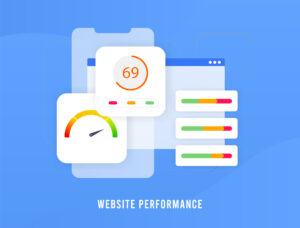 If your website isn’t bringing in the traffic or sales you expect, common SEO mistakes could be holding you back. Simple errors like missing keywords, slow load times, and poor mobile design can prevent potential customers from finding or staying on your site. The good news? These issues can be fixed with a few targeted adjustments.
If your website isn’t bringing in the traffic or sales you expect, common SEO mistakes could be holding you back. Simple errors like missing keywords, slow load times, and poor mobile design can prevent potential customers from finding or staying on your site. The good news? These issues can be fixed with a few targeted adjustments.
Ready to get your SEO on track and connect with more customers? Texas Web Design can guide you with effective strategies to boost your site’s visibility and keep visitors engaged. Let us help you turn SEO challenges into growth opportunities.
Contact us now for more details!
Common SEO Mistakes Impacting Customers
-
Duplicate Content
Duplicate content issues often lead to SEO penalties. Websites with similar pages confuse search engines, pushing them down in rankings. This mistake reduces visibility, directly affecting customer acquisition.
Businesses should audit their sites regularly. They must identify and merge duplicate pages. Unique, high-quality content is crucial for better SEO performance.
-
Keyword Neglect
Ignoring keyword research is a common SEO mistake. It leads to content that doesn’t match user intent or search behavior. This disconnect makes it hard for potential customers to find your site.
To fix this, businesses need to invest time in understanding their audience’s search habits. Using the right keywords ensures that content resonates with users, driving relevant traffic.
-
Vanity Metrics
Focusing on vanity metrics rather than meaningful engagement is a critical error. High page views or likes might look good but don’t necessarily convert into business.
Companies should prioritize metrics that align with their objectives. Tracking conversion rates and customer retention offers a clearer picture of SEO success.
Importance of Keyword Research and Search Intent
-
Keyword Research

Without this foundational step, you might miss out on crucial opportunities to connect with potential customers.
To start, use tools designed for keyword research to identify specific keywords relevant to your business. These should be terms your potential customers are entering into search engines like Google.
This process is essential in crafting content that speaks directly to the interests and needs of your audience.
-
Search Intent
Understanding search intent is about getting into the minds of users. It means recognizing whether they’re looking for information, making a decision, or ready to purchase something. This insight allows you to tailor your content effectively across different categories: informational, commercial, transactional, and navigational.
By aligning your content with the correct search intent, you ensure that your site appears in the right search results.
This alignment helps in meeting the specific needs and questions of your target audience. For instance, someone looking for “how to fix a leaky faucet” requires a different approach than another searching for “best plumbing services.”
Optimize Content for Audience Engagement
-
Quality Content

This approach ensures that the content is not only informative but also valuable. It encourages readers to engage with and share your content. Avoid keyword stuffing, as it can harm the user experience.
Creating content that resonates with your audience boosts organic traffic. Remember, user experience is important.
-
Media Integration
Incorporating various types of media can significantly enhance engagement. Use lists, infographics, and videos to make your content more interactive. These formats help in retaining the attention of your audience longer.
They also make complex information easier to digest. This variety in content presentation caters to different preferences within your audience.
-
Refresh Old Content
Old content on your site can still drive traffic if updated correctly. Revisiting and refreshing old articles or blogs with new information or insights can reinvigorate interest among your audience.
This strategy not only improves search engine optimization but also demonstrates a commitment to quality and relevance. Updating URLs to reflect the new content can further optimize your site’s performance.
Technical SEO Fixes for Better Performance
-
Site Speed

Another strategy involves leveraging browser caching. It allows frequently accessed elements to be stored in the user’s browser, speeding up the site on subsequent visits.
Choosing lightweight themes and plugins can drastically improve performance. These actions not only enhance user experience but also contribute to a good SEO strategy.
Website versions need consolidation to avoid duplicate content, which dilutes SEO value. Using tools like Google Search Console helps identify and resolve these issues efficiently. Ensuring a single, authoritative version of your site is accessible boosts SEO efforts and maintains consistency.
Regular SEO Audits and Competitor Analysis
-
SEO Audits
Conducting periodic SEO audits is crucial for identifying technical issues that could be hindering your site’s performance. These audits help spot problems like broken links, slow loading times, and poor mobile responsiveness.
Tools such as Google Analytics and SEMrush offer deep insights into your website’s health. They track metrics affecting rankings, from bounce rates to session durations. By addressing these issues promptly, businesses can improve their site’s quality and user experience, leading to higher search engine rankings.
SEO audits also reveal opportunities for optimization. Whether it’s enhancing meta descriptions or optimizing images, small changes can have significant impacts on visibility. Solo bloggers and large enterprises alike benefit from regular audits, ensuring their websites meet the latest SEO standards.
-
Competitor Analysis
Analyzing your competitors is another essential strategy. It uncovers precious SEO opportunities missed by your business.
By studying the competition, you learn which queries bring them traffic and how their content ranks for specific keywords. This analysis allows you to adjust your own SEO strategy, targeting gaps left by competitors.
Competitor analysis tools provide valuable data on backlinks, content quality, and social media presence. They highlight strategies for helping others in your industry rank well. Emulating successful tactics while avoiding common pitfalls, such as reliance on link farms, positions your business for better online visibility within a budget.
Final Thoughts
Avoiding SEO mistakes is essential for keeping your customers engaged and satisfied. You’ve seen how effective keyword research, content optimization, technical SEO, and regular audits can make a real difference.
Each step builds towards a strong online presence, helping your site attract and retain customers. Remember, SEO isn’t a one-time fix; it’s an ongoing effort of growth and adaptation.
Now’s the time to take action. Review your website, spot areas needing improvement, and apply these strategies to elevate your performance.
Don’t let common SEO pitfalls cost you valuable traffic and conversions. Instead, use these insights to climb the search rankings and stay ahead of competitors.
Ready to improve your SEO? Reach out to Texas Web Design today for expert help and start seeing your customer base grow.

